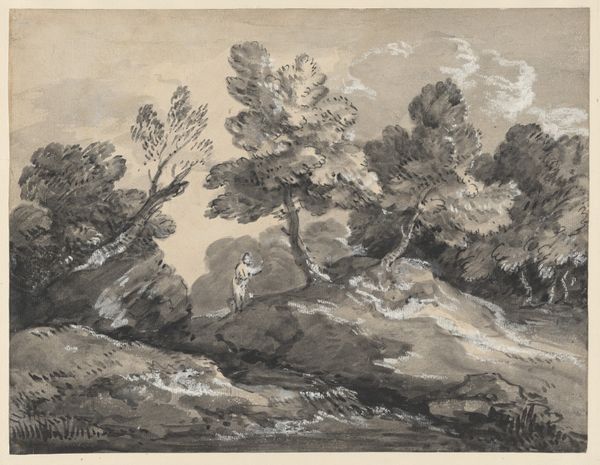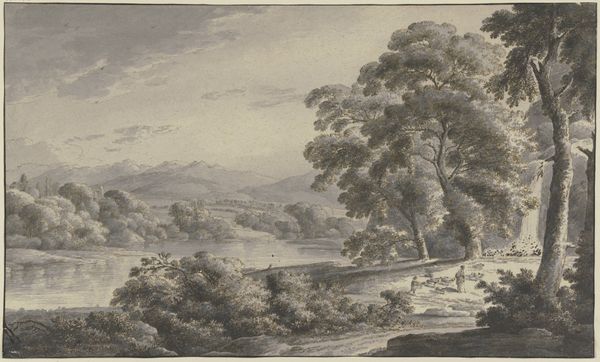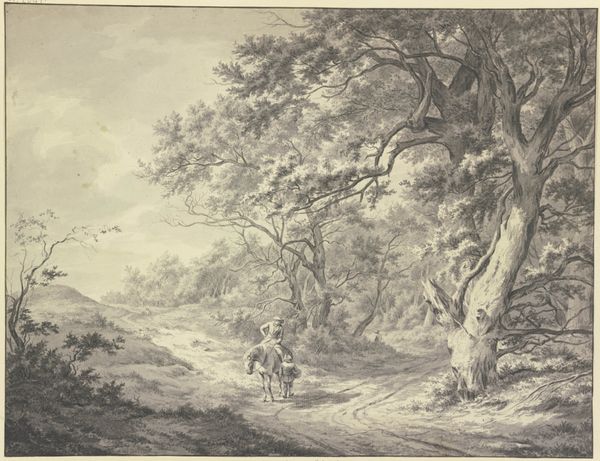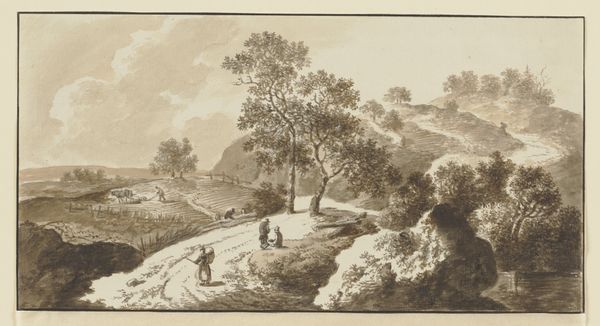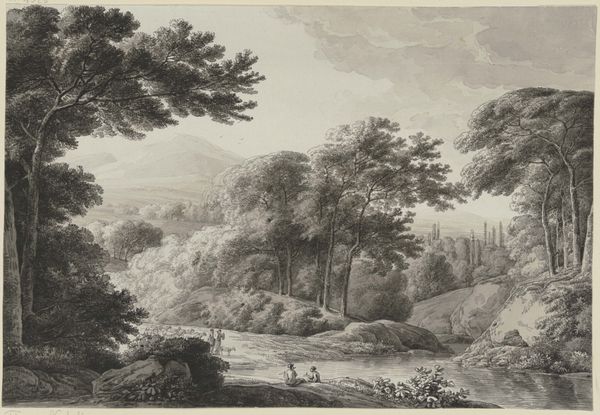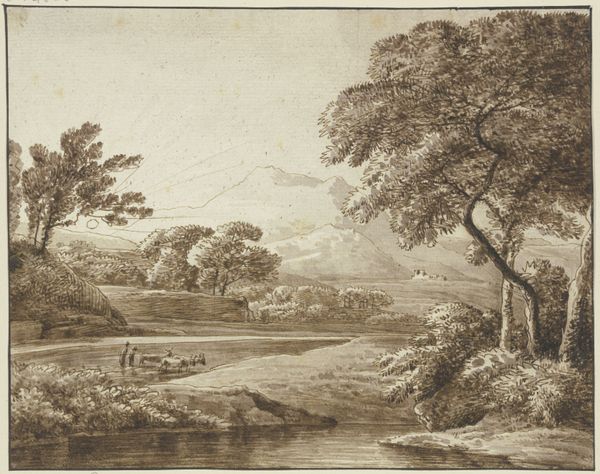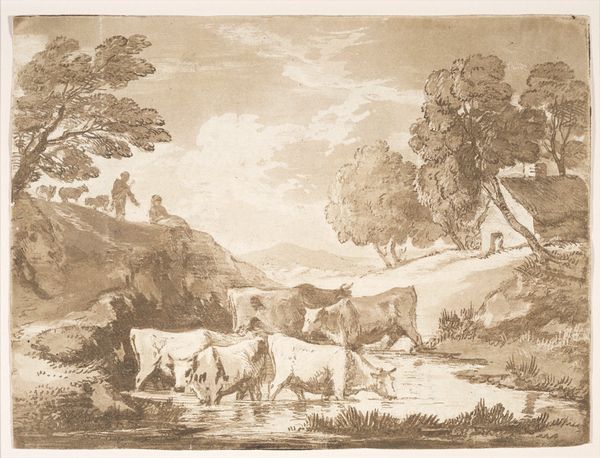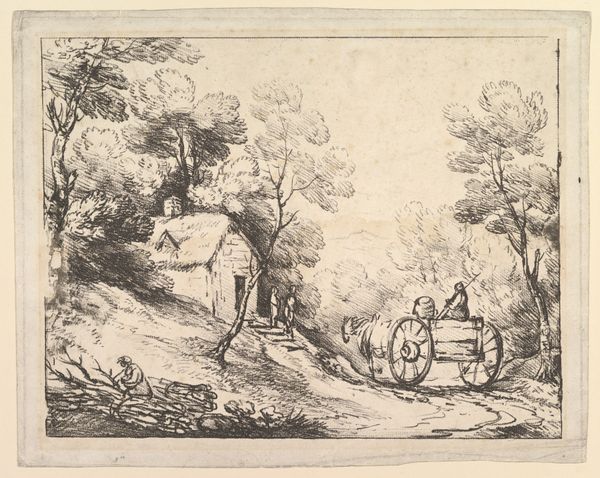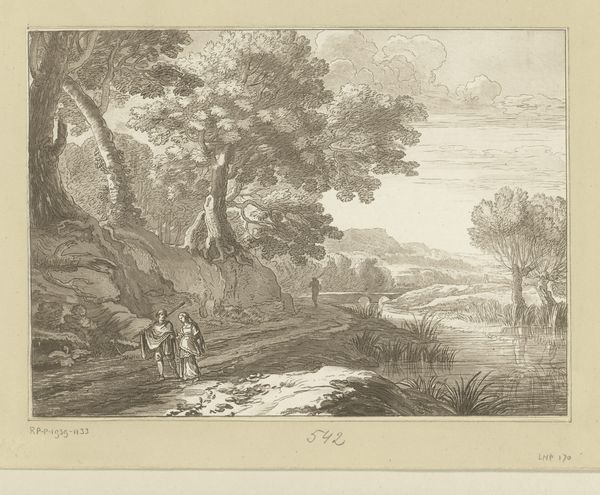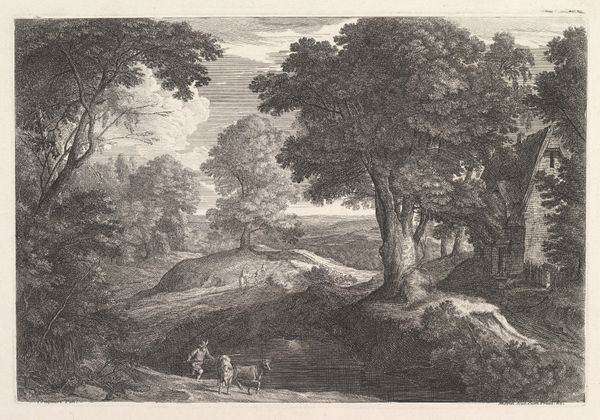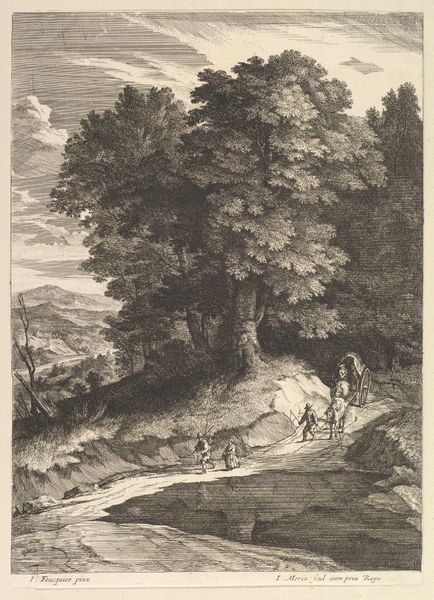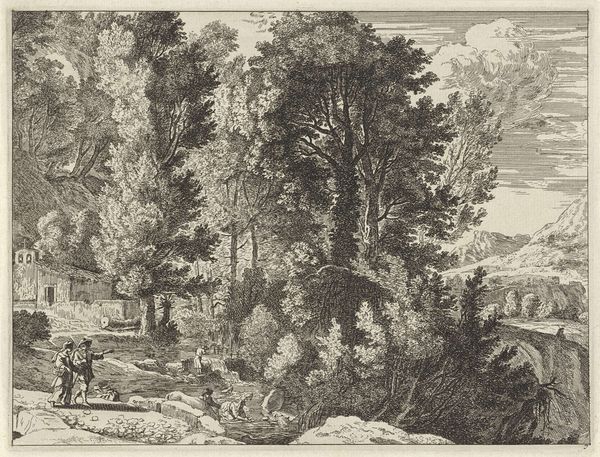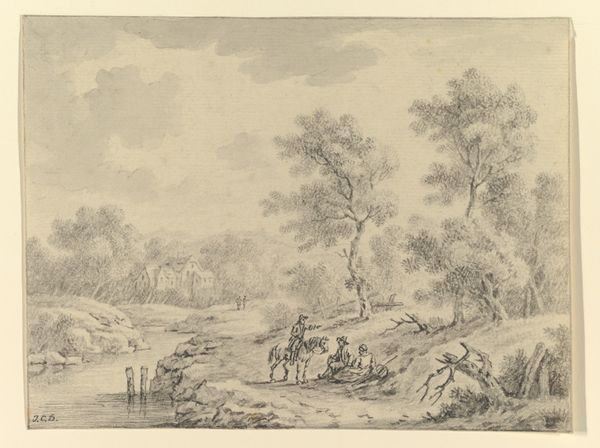
Dimensions: overall (approximate): 28.4 x 36.8 cm (11 3/16 x 14 1/2 in.)
Copyright: National Gallery of Art: CC0 1.0
Curator: Immediately striking, isn't it? A brooding stillness in shades of grey. Editor: Yes, there is a weight, a somber cast. Almost like a scene recalled from memory. Curator: I'm glad you feel that. The piece we are looking at, entitled "Wooded Upland Landscape with a Bridge" dates to about 1780 and comes to us from the hand of Thomas Gainsborough. We see a watercolour drawing. But what feelings does the bridge evoke in you? It has an unreal pallor, don’t you think? Editor: The bridge is almost ethereal, ghostlike against the darkness of the trees. It almost serves as a visual cue--to be considered through the framework of Gainsborough's social standing in relation to the land it overlooks. Who were these two figures approaching it? Curator: An excellent question! One must wonder about the role of class at play here. And given that, what of the visual narrative we can tease from the other details: Note how Gainsborough uses that wash to suggest the atmosphere, to obscure the forms, and thus soften the overall image. He's conjuring mood and recollection. It gives a melancholic feel overall. Editor: And note that this approach certainly falls in line with broader movements in the latter half of the 18th century. Think of the era's newfound fondness for ruins, both real and imagined, as evidence of the ephemerality of empires. Might the pallid bridge not function the same way, then, evoking an association with mortality, especially in relation to the grand estate overlooking it all? Curator: It is fascinating to reflect on the psychological power of such a seemingly simple image. Editor: Indeed. "Wooded Upland Landscape with a Bridge" captures a historical moment but still echoes with questions that transcend its time.
Comments
No comments
Be the first to comment and join the conversation on the ultimate creative platform.
